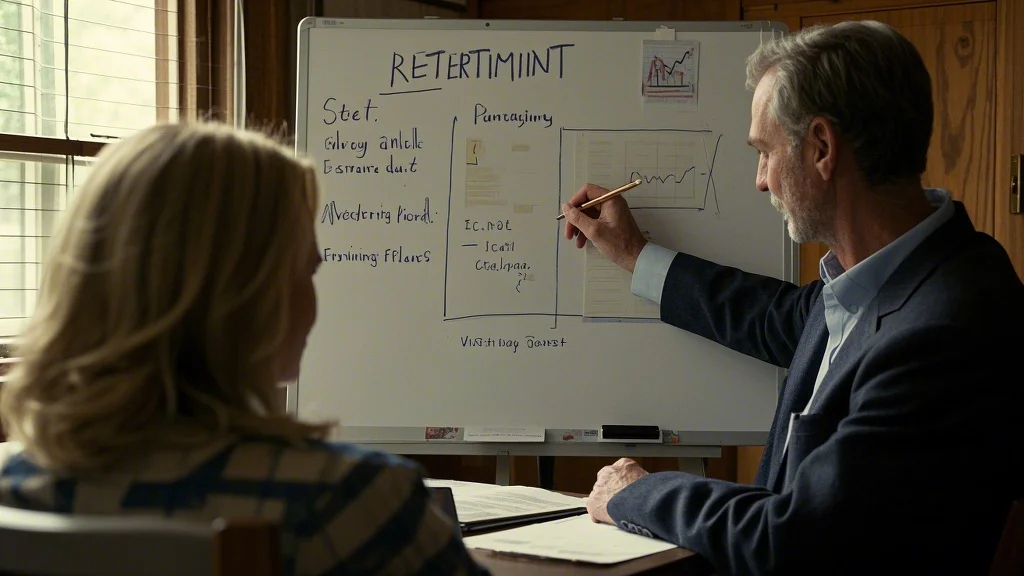Building a Solid Foundation for Retirement
When it comes to retirement planning tips, the most important advice is to start early – but it’s never too late to begin. The power of compound growth means every dollar saved in your 20s could be worth ten times more by retirement age compared to money saved in your 50s. Begin by calculating your retirement number – the amount you’ll need to maintain your desired lifestyle. A common rule of thumb suggests aiming for 70-80% of your pre-retirement income, but many financial advisors now recommend planning for 100% or more, especially if you have ambitious travel or lifestyle goals.
Creating multiple income streams is crucial for retirement security. Beyond traditional retirement accounts, consider taxable investment accounts, rental properties, or part-time work that could continue into retirement. Diversifying your income sources protects against market volatility and unexpected expenses. Health care costs often surprise retirees, so factor in Medicare premiums, supplemental insurance, and potential long-term care expenses when calculating your needs. Remember that retirement could last 30 years or more, so your money needs to work harder and last longer than previous generations required.
Debt management plays a critical role in retirement readiness. Entering retirement with mortgage payments, credit card balances, or other debts can significantly strain your fixed income. Develop a strategy to eliminate high-interest debt first, then focus on paying down your mortgage if possible. However, don’t sacrifice retirement account contributions to pay off low-interest debt – the tax advantages and potential growth of retirement funds often outweigh the benefits of early debt repayment.
Comparing Retirement Account Options
A thorough retirement accounts comparison reveals distinct advantages to different savings vehicles. Traditional 401(k)s and IRAs offer upfront tax deductions but taxable withdrawals, while Roth accounts provide tax-free growth and withdrawals in exchange for after-tax contributions. Health Savings Accounts (HSAs) offer triple tax advantages for those with high-deductible health plans – contributions are tax-deductible, growth is tax-free, and withdrawals for qualified medical expenses avoid taxation entirely.
Self-employed individuals and small business owners have additional options like SEP IRAs and Solo 401(k)s that allow higher contribution limits than traditional retirement accounts. These plans can accelerate retirement savings for entrepreneurs who might have started saving later in their careers. Understanding the nuances of each account type helps maximize tax advantages while maintaining flexibility in retirement. For example, having both traditional and Roth accounts allows strategic withdrawals to manage taxable income in retirement.
Required Minimum Distributions (RMDs) represent another key consideration when comparing accounts. Traditional IRAs and 401(k)s require withdrawals starting at age 73 (as of 2023), while Roth IRAs have no RMDs during the owner’s lifetime. This distinction makes Roth accounts particularly valuable for wealth transfer strategies, as they can continue growing tax-free for heirs. Qualified Charitable Distributions (QCDs) offer a tax-efficient way to satisfy RMDs for those inclined to philanthropy after age 70½.

Strategies for Early Retirement Planning
Early retirement financial planning requires more aggressive savings strategies and careful withdrawal planning. The FIRE (Financial Independence, Retire Early) movement popularized extreme savings rates of 50-70% of income, but more moderate approaches can also achieve early retirement goals. Building substantial taxable investment accounts becomes crucial for those retiring before age 59½ when most retirement accounts impose early withdrawal penalties.
The Roth conversion ladder strategy allows early retirees to access retirement funds without penalties by systematically converting traditional IRA funds to Roth IRAs and waiting five years before withdrawing the converted amounts. Health insurance represents one of the biggest challenges for early retirees, making Health Share Ministries or high-deductible plans with HSAs attractive options before Medicare eligibility at 65. Geographic arbitrage – relocating to areas with lower costs of living – can dramatically extend retirement savings for those willing to move.
Sequence of returns risk poses particular danger to early retirees, as market downturns in the first years of retirement can permanently deplete portfolios. Maintaining 2-3 years of living expenses in cash equivalents helps avoid selling investments during market lows. Flexible spending plans that allow reducing withdrawals during poor market years significantly improve portfolio longevity. These strategies require discipline but enable sustainable early retirement when implemented properly.
Creating a Comprehensive Retirement Blueprint
Learning how to create a retirement plan begins with honest assessment of your current situation and future goals. Start by tracking current expenses to establish a baseline, then project how these might change in retirement. Some costs like commuting and work attire will decrease, while travel and healthcare expenses often increase. Online retirement calculators provide rough estimates, but personalized projections from a financial planner account for more variables like pension income, Social Security strategies, and tax implications.
Social Security timing significantly impacts retirement plans. While benefits can begin at 62, delaying until 70 increases monthly payments by about 8% annually. For married couples, coordinating spousal benefits creates additional planning opportunities. Survivor benefits make delaying the higher earner’s Social Security particularly valuable, as the surviving spouse will receive that higher amount for life. These decisions should align with your overall retirement income strategy and longevity expectations.
Estate planning completes the retirement blueprint, ensuring your assets are distributed according to your wishes while minimizing tax burdens. Beneficiary designations on retirement accounts override wills, so regular reviews prevent unintended consequences. Trusts can manage distributions to heirs while protecting assets from creditors or divorcing spouses. Powers of attorney and healthcare directives are equally important, allowing trusted individuals to manage affairs if you become incapacitated.
Investment Strategies for Retirement Savings
The best retirement savings strategies balance growth potential with risk management appropriate for your timeline. Younger investors can tolerate more stock market volatility, with target-date funds or 60-80% equity allocations providing growth opportunities. As retirement approaches, gradually shifting toward more conservative allocations helps protect accumulated savings. However, maintaining some growth investments throughout retirement combats inflation risk that could erode purchasing power over decades.
Diversification remains key at all stages – across asset classes, sectors, and geographies. Alternative investments like real estate investment trusts (REITs) or commodities can provide income streams less correlated with traditional markets. Bond laddering strategies create predictable income by staggering fixed-income maturities. Annuities offer guaranteed income options but require careful evaluation of fees and surrender charges.
Tax-efficient withdrawal strategies can significantly extend retirement savings. Generally, it’s advantageous to draw from taxable accounts first, allowing tax-advantaged accounts more time to grow. Roth conversions during low-income years between retirement and RMD age can reduce future tax burdens. Harvesting capital gains strategically when income falls below certain thresholds provides tax-free growth opportunities. These techniques require ongoing attention as tax laws and personal circumstances evolve.
Managing Risks in Retirement
Comprehensive retirement planning must address longevity risk – the chance of outliving your savings. Annuities or systematic withdrawal plans based on conservative assumptions help mitigate this risk. Long-term care insurance or hybrid life insurance policies with long-term care riders protect against potentially catastrophic expenses that could deplete retirement funds. These policies become more expensive as you age, making earlier purchases advisable if you have family history of chronic illness.
Inflation represents another persistent retirement risk, gradually eroding purchasing power even at modest rates. Social Security includes cost-of-living adjustments, but other income sources may not. Maintaining growth investments in retirement and considering inflation-protected securities like TIPS (Treasury Inflation-Protected Securities) can help preserve real spending power over extended retirements.
Healthcare costs require particular attention, with a 65-year-old couple today needing an estimated $315,000 saved for retirement healthcare expenses (excluding long-term care). Medicare doesn’t cover everything – dental, vision, hearing aids, and most long-term care aren’t included. Understanding Medicare Parts A, B, C, and D, along with supplemental Medigap policies, prevents unexpected expenses from derailing your retirement budget.
Lifestyle Planning for a Fulfilling Retirement
While financial preparation is crucial, successful retirement also requires thoughtful retirement planning tips for your time and purpose. Many retirees struggle with the transition from structured work life to open-ended freedom. Developing hobbies, volunteer opportunities, or part-time work before retirement eases this transition. “Practice” retirements – extended vacations or sabbaticals – can reveal how you’ll actually enjoy spending your time before making the permanent leap.
Relocation decisions should consider not just cost of living but access to healthcare, social networks, and activities that match your interests. Some retirees choose to downsize, while others prefer retirement communities offering built-in social circles and amenities. Climate preferences, proximity to family, and tax implications all factor into ideal retirement locations.
Continuing education keeps minds sharp in retirement, with many universities offering free or discounted classes for seniors. Travel plans should account for potential physical limitations that may develop later in retirement – taking more strenuous trips earlier while you’re able. Maintaining physical health through regular exercise becomes an investment in your retirement quality of life and healthcare cost management.
Regular Review and Adjustment Process
A retirement plan isn’t a one-time creation but an evolving document requiring regular updates. Annual reviews should assess portfolio performance, spending patterns, and any life changes that might affect your plan. Major events like inheritances, health diagnoses, or new grandchildren all warrant plan adjustments. Market conditions may suggest modifying withdrawal rates or rebalancing investments to maintain appropriate risk levels.
Working with a fiduciary financial planner provides professional guidance through these ongoing adjustments. Fee-only advisors who don’t earn commissions offer objective advice focused on your best interests. They can help navigate complex decisions like Roth conversions, Social Security timing, and RMD strategies while keeping your overall retirement vision on track.
Staying informed about tax law changes ensures your plan adapts to new opportunities or constraints. The SECURE Act and subsequent legislation have significantly changed retirement account rules regarding inherited IRAs and RMD ages. Proactive planning turns these changes into advantages rather than surprises that could undermine your retirement security.
